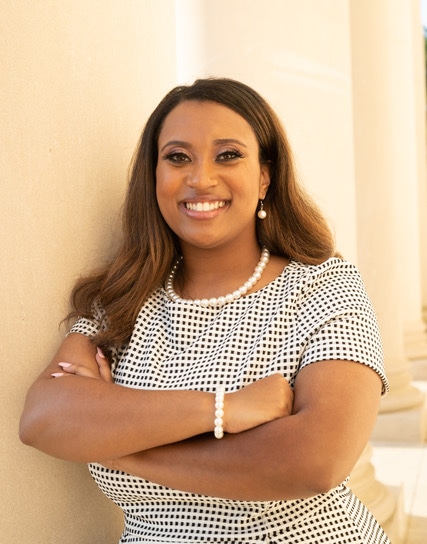Removing the Propaganda: SPLC reveals new data on schools whose names glorify Confederacy and pushes to change them
In the 1860s, Robert Mills Lusher served as a Confederate tax collector and then as Louisiana’s superintendent of education following the Civil War. The Reconstruction-era educator wrote in his journal that the chief goal of education was to “vindicate the honor and supremacy of the Caucasian race.”
In the last decade of his life, Lusher edited his Louisiana Journal of Education, where he called for “manual training” for Black students and the removal of rights from Black citizens. He filled the pages of his unfinished memoir by reminiscing over a lifetime of advocacy for white supremacy.
Simply put, Lusher did not believe in educating Black people. But today, a K-12 public school in New Orleans – one with a majority Black student population – bears his name.
“What a slap in the face,” said Phylicia Richardson, a Black woman whose daughter attends high school at Lusher Charter School.
“New Orleans is a predominantly Black city, and Lusher’s mission was just horrible,” said Richardson, who is the school’s PTA president.
Richardson, who is also an administrative assistant for the Southern Poverty Law Center’s Children’s Rights Practice Group, is involved in efforts with other parents, students and alumni to change the school’s name to one that does not honor the Confederacy.
In a recent update of its index of Confederate iconography displayed in public spaces across the country, the SPLC identified an additional 100 schools named for Confederate leaders, bringing the total to 304. The majority of those schools are in the South.
Of the schools identified, 85 have been closed or renamed, thanks to the growing movement to remove Confederate statues and other symbols across the country. An additional 21 schools have committed to changing their names but have not yet done so.
The name of Lusher Charter School is the subject of intense debate, and the local school system is now in the process of renaming the building that houses the elementary school, upon which Lusher’s full name is prominently featured. But because the charter school is operated by a private entity, the Orleans Parish School Board says it doesn’t have the authority to rename the school itself.
Parents like Richardson disagree.
It pains Richardson that in 2021, the school’s name still honors someone who used his position to promote white supremacy and deny educational equity to Black people.
“Why would we want our children to go to this school, given Lusher’s mission?” Richardson, 33, asked. “Lusher didn’t want me here, and he wouldn’t want my daughter here. Why do we have to hold on to his name? This is not a small issue; this is an issue we have to deal with now and not drag our feet.”
‘Learn the real history’
The SPLC began cataloging Confederate memorials, statues, school names and other symbols in public spaces following the murders of nine Black people during the June 17, 2015, attack on the “Mother Emanuel” A.M.E. church in Charleston, South Carolina, by a white supremacist who had posted photos of himself with a Confederate flag and an automatic weapon.
Since then, many cities have removed statues and renamed buildings, but nearly 200 schools still bear Confederate names.
“All school districts that continue supporting the mythology of the Confederacy must reexamine the message being conveyed to students, staff and the communities they serve – the people who are directly affected by the pain and oppression these names and images represent,” SPLC Chief of Staff Lecia Brooks said.
The fact that so many schools were named for Confederates is not happenstance. It was one small part of a century-long propaganda campaign to defend white supremacy and promote the “Lost Cause” narrative of the Civil War – the myth that the conflict was fought over issues other than slavery.
The Lusher school, for example, was named in 1910, at the height of the first major movement to install Confederate iconography across the Southern landscape. The second period that saw a surge of Confederate monuments installed and schools named for Confederates was during the 1950s and 1960s as white supremacists resisted the civil rights movement, SPLC research shows.
The movement to change the name at Lusher began in 2015, the year the Charleston church attack sparked a movement to remove Confederate symbols. The push began anew after the police murder of George Floyd on May 25, 2020, which led students to march on campus to protest the school’s name.
“People are holding on to this [name], and there’s no reason why they should,” Richardson said. “When you start to look at why schools have been named after these leaders, it’s like, ‘Oh, OK,’ and we start to make excuses to keep the names.”
On Aug. 12, the SPLC held a media briefing on school renamings, where the fight to rename Lusher was discussed. The panel discussion also highlighted how Jacksonville, Florida, successfully changed the names of six schools honoring the Confederacy in June 2021 and challenged other school districts to do the same.
Corinne Williams, a community organizer who specializes in school renamings, spoke at the media briefing. She attended Lusher Charter School from kindergarten through twelfth grade. But she did not learn about the school’s namesake until after entering college and seeing a local news report about research into who Robert Mills Lusher was.
“As a Black woman, I have to invoke the name of this person who did not want to give me basic educational rights, basic human rights, who uplifted and supported slavery and was treasonous and seditionist – every single day when I go out into the community and people say, ‘Where did you go to school?’”
She said all the charter school board has to do to change the school’s name is to take a vote.
“The charter board has the power to change the name of the school program and has yet to do so after over a year of consistent lobbying by parents, students, alumni and even teachers,” Williams said.
She and Richardson agree that changing the school’s name is long overdue.
“It’s a hurt culture when you begin to learn the real history – history that’s not taught in schools, and history that goes against what represents us as a country. Celebrating these schools simply should not be done anymore,” Richardson said.
‘Openly racist’
Of the more than 300 schools identified in the SPLC database, 198 schools are listed as “live,” meaning they still bear Confederate names and have not committed to changing them. Twenty-one other schools have committed to changing names but have not yet done so.
The states with the most “live” schools are Georgia (45), Texas (40) and Alabama (22).
For Richardson, the movement to rename schools is important not just for the Black community, but for everyone in the United States.
“This affects all of us,” she said. “We need to move past slavery. But white supremacy behavior is still here. We’ve allowed it to be here because people rarely say anything. But now we have a voice, and people are listening. People who’ve never thought about renaming schools are now pondering this.”
To view the full list of schools named after Confederate leaders, click here. To view the Aug. 12 media briefing, click here. To learn about the history of Confederate symbols, visit the SPLC’s Whose Heritage? report.
Photo at top: Lusher Charter School by Luca Sartoni/Flickr



